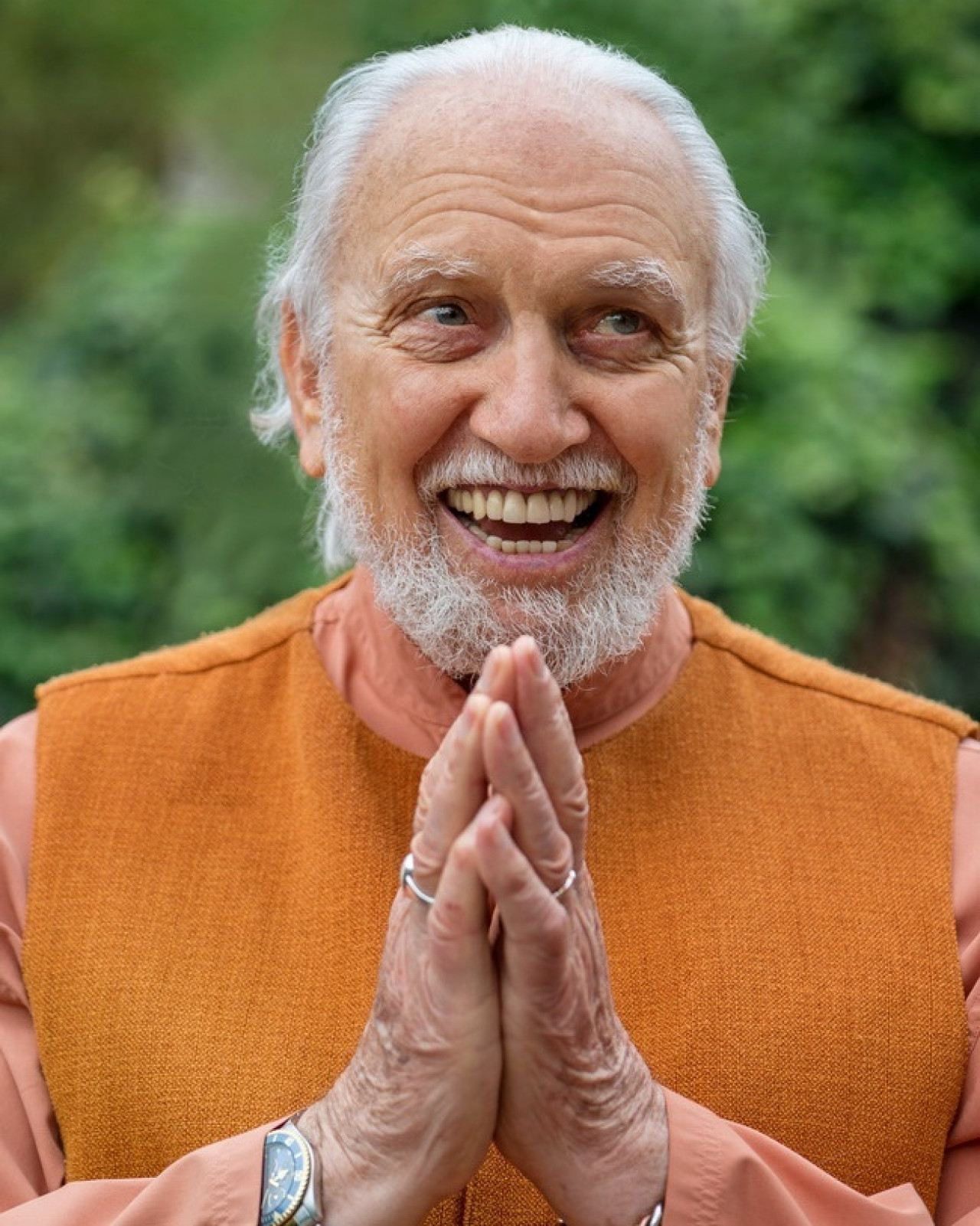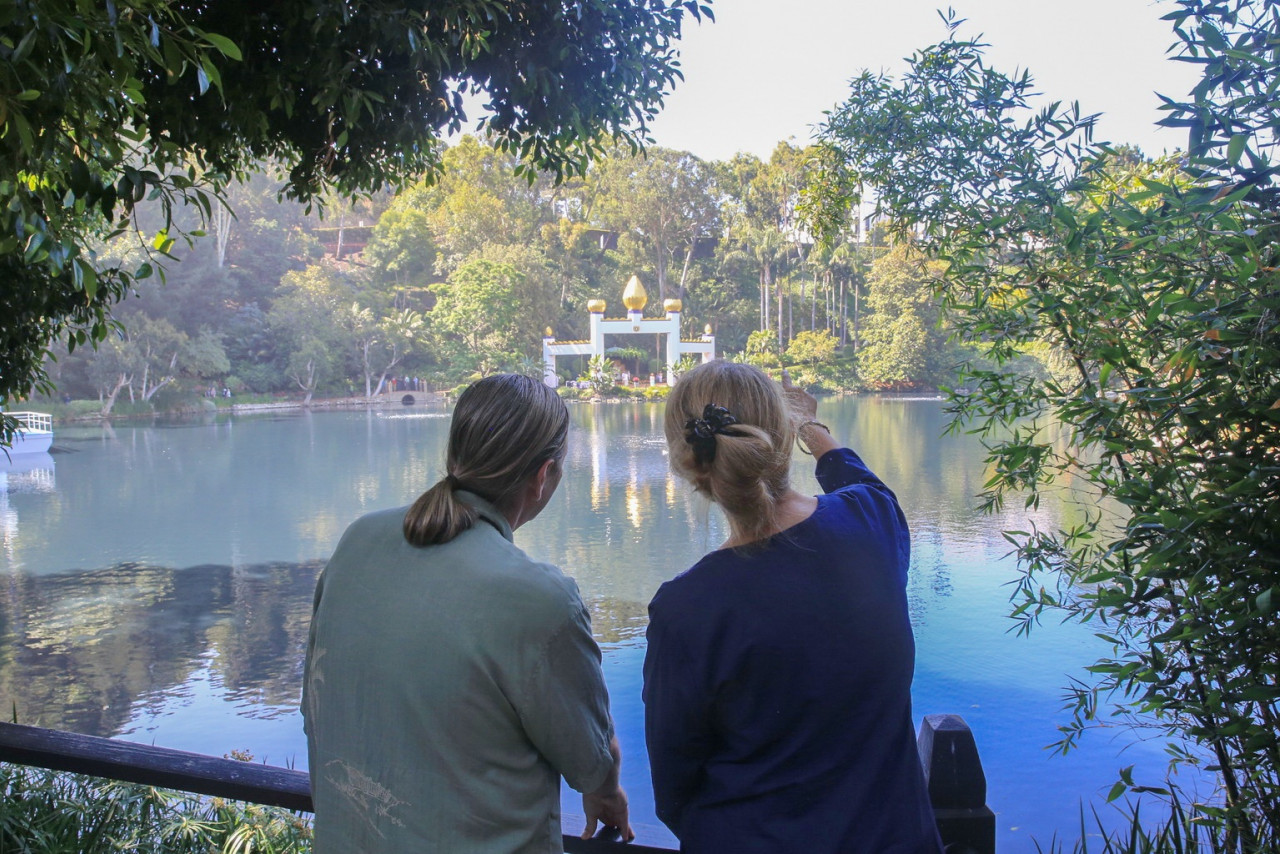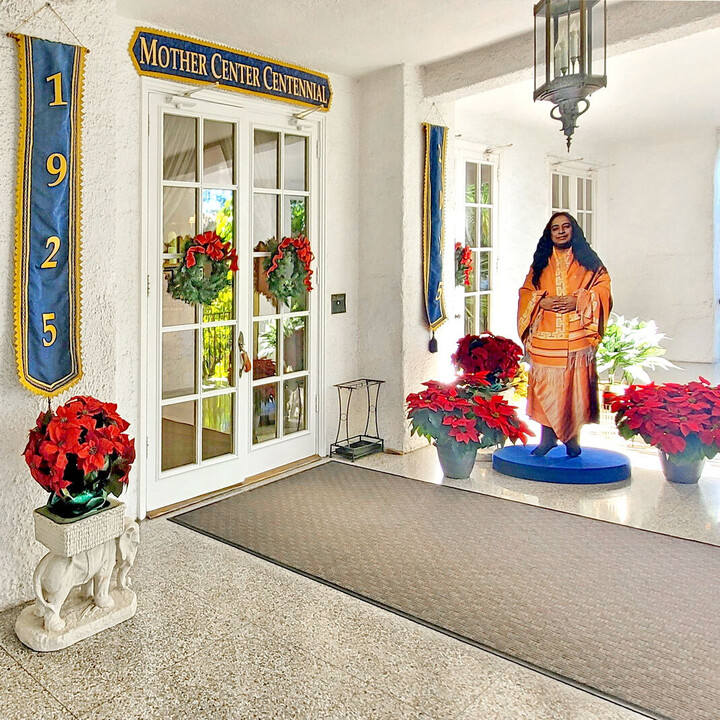Meditation — An Ancient Panacea for Our Modern-Day Challenges
An Interview With Brother Achalananda
Part 2

(This is the second in a three-part series.)
Interviewer: What, in your experience, is the most important factor for success or progress in our practice of meditation?
Brother Achalananda: The important factor in the practice of meditation is to be regular — meditate every day and simply keep it going. If you start to meditate and then periodically stop and pick it up after a while, you slow your progress down very much. If you want to make progress, meditate every day.
Not giving up is so important. That’s why I adopted as my motto when I first came into the ashram “Keep on keeping on.” Never give up, no matter what happens to you. Refuse to give up; say: “No, I will hang in there. I will work my way through this and continue on.” You have to be very intent on that. Just thinking of it in a mild way won’t work, because tests will come — you’ll be tempted to slacken or give up your efforts to meditate because it will appear you aren’t making progress. But if just keep on trying, eventually you’ll work through that dry spell and suddenly find you’ve attained a higher state of consciousness. And then you’ll be very glad you persevered.
Not giving up is so important. That’s why I adopted as my motto when I first came into the ashram 'Keep on keeping on.'
I: What are some other keys to success in meditation?
BA: There are certain things we can do that can help our meditations to become deeper, and one is to learn when you meditate to sit still and not move: Get into a comfortable position and then do not move. And if you can do that for, say, 45 minutes or so, then you’ll find that the senses dim down. So you are not connected with creation as strongly.
I remember one time I was leading an all-day Christmas meditation and was just wearing only my thin monastic shirt. I’d thrown a chuddar [shawl] on my shoulder to use just in case I got cold. The windows were partially open to let in fresh air, and soon it did start to get cold. Then I thought, “Ah, why not see if you can tough it out, just out of curiosity?” And then somebody must have complained about not getting enough fresh air, so the usher opened another window or door next to where I was sitting, so that now the fresh breeze was blowing directly on me. When it first hit, I thought: “Wow, that is cold! I don’t know if I can handle this.” Then I thought: “Well, why don’t you see what happens? Just sit here and don’t move and see what happens.” And I sat there for the remaining four hours and I did not move. And I didn’t feel the cold, or only slightly so. But the moment I moved, I thought, “Whoa! It’s really cold in here!”
So we can control these things, but we often don’t know how because we’ve never experienced it. But if we make the effort, we discover we can control them.
When I first came into the ashram, Sri Daya Mata [1914–2010] — who was SRF’s president and an exalted disciple of Paramahansa Yogananda — was always telling the monastics to learn not to move when we meditated. And, despite that, it took me a long time to begin really to take it seriously and start to try to do it. Like many people, in the beginning I couldn’t sit five minutes without moving.
Another key to going deeper in meditation is to concentrate here at the spiritual eye [at the point between the eyebrows]. I used to sometimes put my finger there so I could raise my eyes and tell exactly where I was supposed to look, because you’re supposed to keep your eyes lifted in meditation. This is another aspect of the SRF teachings that Daya Mata very much stressed to the monastics. And I discovered when I did learn to do that, it was like sitting still: just lifting the eyes, putting one’s attention at the spiritual eye, helps one to interiorize the mind. When the eyes drop to the level of looking straight ahead, then the mind becomes active and you’ll find that you’re restless. And when they drop further, so that they are looking down, then you’ll tend to fall asleep.

I: Are the SRF teachings compatible with life in the world today?
BA: The SRF teachings are compatible with any type of life, and certainly life today. But are the people compatible with the teachings? We have to turn it around. The teachings are always compatible; they will take you, as Paramahansaji said, as far as you want go in self-development and spiritual progress, and ultimately to the highest states of spiritual consciousness.
And I certainly say that, following these teachings for so many years as I have, I have been able to make a lot of spiritual progress. My whole life has changed; I find it hard to even recognize how I was before, when I first came on this path some sixty-odd years ago. I remember hearing Daya Mata say that about herself many years ago, and now I can say it myself: I find it hard to remember how I used to be.
To give an example: When I first came in the ashram the monks had a practice in which each of us anonymously wrote down the predominant positive qualities that we saw in each of our brother monks, and then these were compiled and posted for everyone to read. It was a fun way of encouraging each other and also getting some insight into how others saw you. The phrase “will power” appeared frequently by my name, and this was a quality I had always had since early in my life. It wasn’t until later that I started to also really value and consciously develop the qualities of humility and love.
For many years now I have been making a conscious effort to learn to love everybody, whether they like me or not. That involves learning to accept people as they are, rather than trying to change others. I have learned to focus on changing myself, to say to myself whenever a situation arises in which someone is behaving in ways that I find unpleasant, “Why do I let that person’s behavior bother me? Instead, let me focus on how I am reacting.”
Why are we on the spiritual path? We are trying to overcome the ego, so we can express the soul. If we make changing ourselves our focus, this completely changes our perspective. This gives us something positive we can work on instead of getting involved in something negative. The ability to do this — like the ability to give love even to those who are antagonistic to us — comes gradually, as we make spiritual effort over the years.





Leave a comment